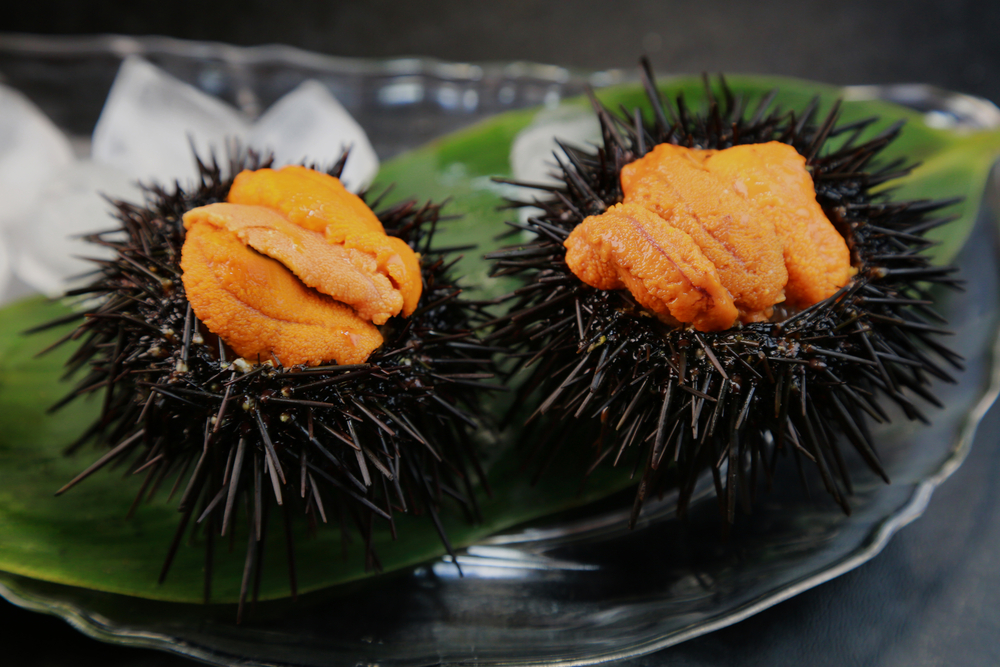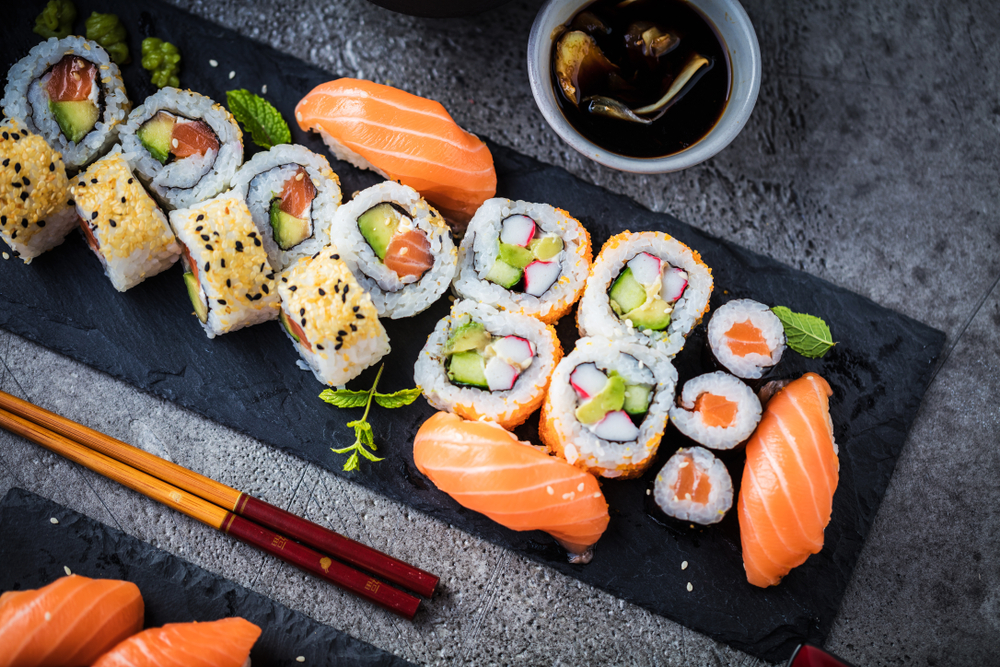I have always been curious about the taste of yellowtail, a popular fish that is often served in sushi restaurants. Y
ellowtail, also known as Hamachi or Japanese Amberjack, is a type of fish that is found in both the Pacific and Atlantic oceans. It has a rich, buttery texture and a mild, slightly sweet flavor that is often compared to tuna or sea bass.
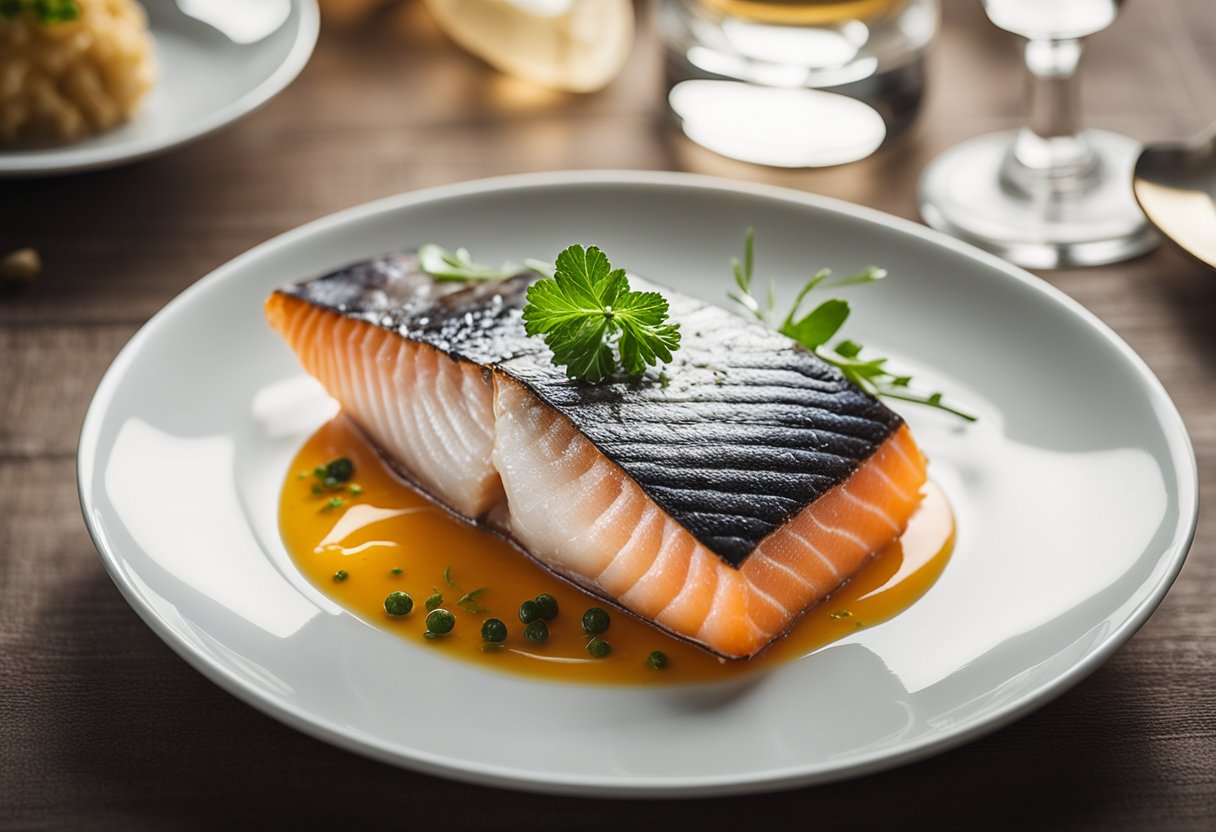
Understanding Yellowtail is essential to appreciate its taste and flavor profile. This fish has white flesh that is oily and ideally suited for most cooking methods except for frying. Yellowtail is renowned for both its fighting spirit and delicious flavor.
It is a much-loved fish among both eaters and fishermen. Many home cooks wonder what yellowtail tastes like and whether it can be cooked and seasoned in different ways.
Key Takeaways
- Yellowtail has a rich, buttery texture and a mild, slightly sweet flavor that is often compared to tuna or sea bass.
- Yellowtail is a versatile fish that can be cooked in a variety of ways, except for frying.
- Yellowtail is a much-loved fish among both eaters and fishermen, and it is often served in sushi restaurants.
Understanding Yellowtail
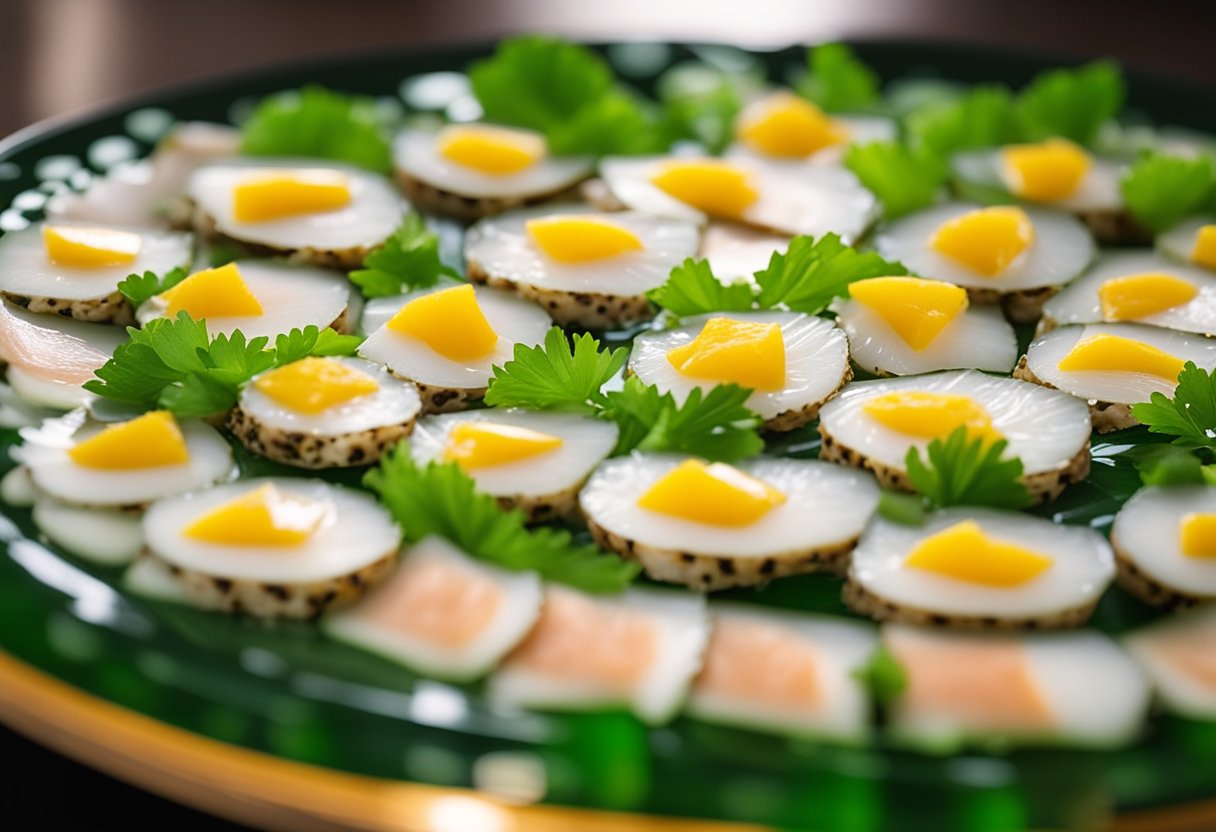
Yellowtail, also known as Japanese Amberjack, is a type of fish that belongs to the jack family. It is found in both the Pacific and Atlantic oceans and is popular in sushi restaurants and seafood markets around the world. Yellowtail has a high fat content, which contributes to its rich flavor and buttery texture.
The species of yellowtail can vary depending on the region it is caught in. In the Pacific Ocean, the yellowtail species is Seriola lalandi, while in the Atlantic Ocean, it is Seriola dumerili. The size of yellowtail can also vary, with some individuals growing up to 6 feet long and weighing up to 200 pounds.
Yellowtail is often compared to tuna or sea bass in terms of taste and texture. It has a mild, slightly sweet flavor and a rich, buttery texture that melts in your mouth. The flavor can vary depending on the freshness of the fish and the way it is prepared.
When buying yellowtail, it is important to look for fresh fish with clear eyes and bright red gills. The flesh should be firm and have a bright, shiny appearance. Yellowtail can be cooked in a variety of ways, including grilling, broiling, baking, or pan-searing. It is also a popular fish for sashimi and sushi recipes.
In conclusion, yellowtail is a delicious and versatile fish with a rich flavor and buttery texture. Understanding the species, region, and size of yellowtail can help you appreciate its unique taste and quality.
Taste and Flavor Profile of Yellowtail
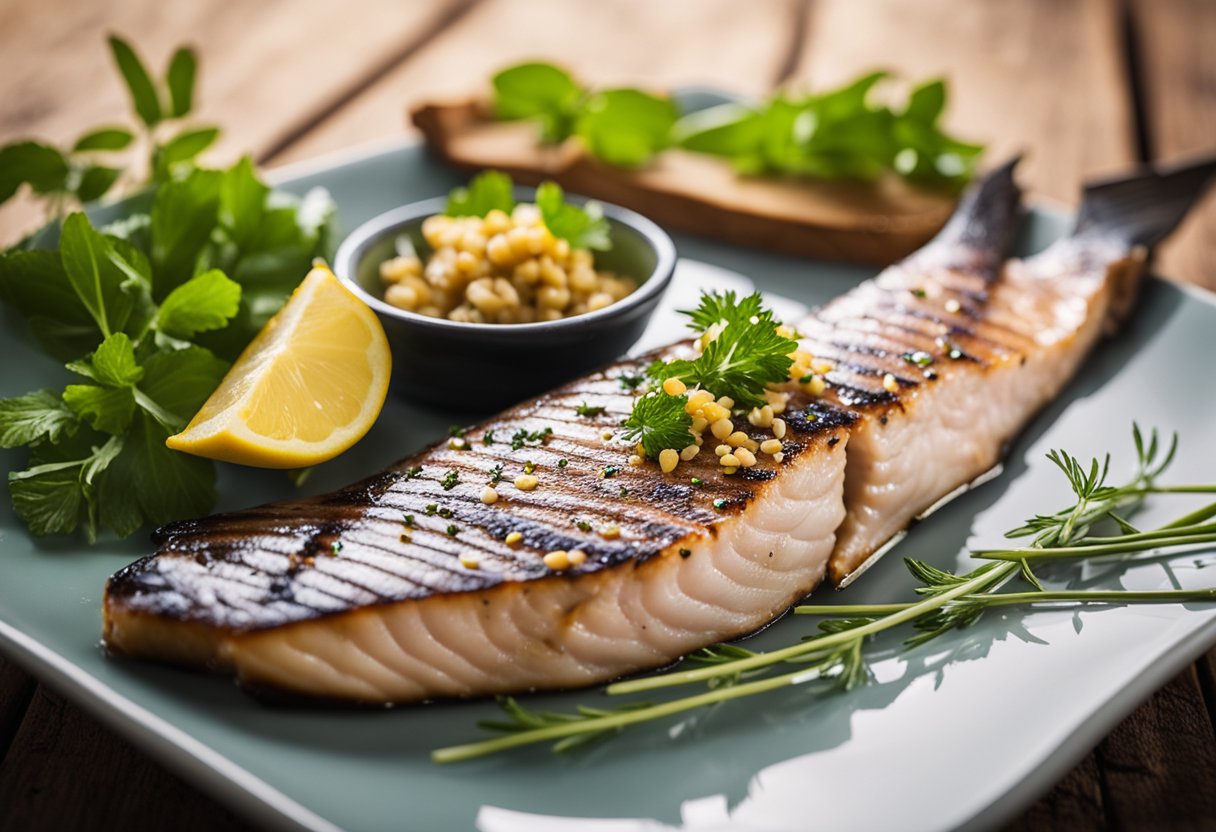
Yellowtail, also known as Hamachi or Japanese Amberjack, is a popular fish found in both the Pacific and Atlantic oceans.
As a sushi ingredient, it has a taste similar to Tuna, but with a milder and cleaner flavor profile. Yellowtail offers a crisp taste and a slightly chewy texture, making it a favorite among sushi lovers.
When cooked correctly, yellowtail has a rich flavor and flaky texture that pairs well with other flavors such as soy sauce, wasabi, and pickled ginger. It has a higher fat content than most other fish, giving it that slight buttery flavor. Yellowtail is versatile and can be enjoyed raw or cooked.
Yellowtail has a mild, slightly sweet flavor that is often compared to tuna or sea bass. It has a really pleasant fish taste, especially if you’re used to the stronger flavors of other fish like salmon or mackerel.
Additionally, there are certain sections of deep red flesh that possess their own delicate yet alluring flavor.
Yellowtail has a savory, umami taste that is often described as having a buttery, melt-in-your-mouth texture. It has a mild, sweet flavor with a hint of sourness that makes it a versatile ingredient in many dishes.
The flavor profile of yellowtail can vary depending on the season, the location where it was caught, and the preparation method used.
In summary, yellowtail has a mild, sweet flavor with a buttery texture that makes it a versatile ingredient in many dishes. It has a savory, umami taste that is often compared to tuna or sea bass.
Yellowtail can be enjoyed raw or cooked, and its flavor profile can vary depending on the season, location, and preparation method.
Texture of Yellowtail
Yellowtail has a firm flesh that is flaky in texture. The texture of Yellowtail is one of the reasons why it is a popular choice among seafood lovers. The firm flesh of Yellowtail makes it easy to cook and handle. The flaky texture of Yellowtail adds a unique mouthfeel to the fish, making it a delight to eat.
The texture of Yellowtail can also be described as buttery. This is due to the high-fat content of the fish. The buttery texture of Yellowtail is what gives it a rich and luxurious taste. When cooked, Yellowtail melts in your mouth, leaving a buttery aftertaste that is hard to forget.
Yellowtail is a versatile fish that can be prepared in a variety of ways. Its firm flesh makes it ideal for grilling, baking, and frying. The flaky texture of Yellowtail makes it perfect for sushi and sashimi. The buttery texture of Yellowtail makes it a great addition to stews and soups.
In summary, the texture of Yellowtail is firm, flaky, and buttery. Its firm flesh makes it easy to cook and handle, while its flaky texture adds a unique mouthfeel to the fish. The buttery texture of Yellowtail is what gives it a rich and luxurious taste that is hard to forget.
Yellowtail in Sushi and Sashimi
As a popular ingredient in sushi and sashimi dishes, yellowtail has a unique taste and texture that sets it apart from other types of fish. When served raw in sushi or sashimi, yellowtail has a buttery texture that melts in your mouth. Its mild, slightly sweet flavor is often compared to tuna or sea bass.
In sushi rolls and nigiri, raw yellowtail is often paired with wasabi, soy sauce, and ginger to enhance its flavor. Wasabi, a spicy Japanese condiment, adds a kick of heat to the dish, while soy sauce provides a salty, savory flavor. Ginger, often served pickled, is used as a palate cleanser between bites to refresh the taste buds.
When preparing yellowtail for sushi or sashimi, it is important to use fresh, high-quality fish. The fillets should be sliced thinly and served immediately to ensure the best flavor and texture.
Some sushi chefs also use a technique called “aburi,” which involves lightly searing the fish with a blowtorch to enhance its flavor and give it a slightly smoky taste.
Overall, yellowtail is a versatile and delicious fish that is a favorite among sushi and sashimi lovers. Its mild, buttery flavor and delicate texture make it a perfect addition to any sushi dish, whether served raw or lightly seared.
Cooking Methods for Yellowtail
When it comes to cooking yellowtail, there are a few methods that work particularly well. Here are some of the best ways to prepare this delicious fish:
Grilling
Grilling is one of the best ways to cook yellowtail. It’s a simple method that requires minimal preparation and yields delicious results. To grill yellowtail, simply brush the fish with oil and season it with salt and pepper. Then, place it on a hot grill and cook for 3-4 minutes per side, or until the fish is cooked through.
Baking
Baking is another great way to cook yellowtail. This method is particularly good for those who prefer a more hands-off approach to cooking.
To bake yellowtail, preheat your oven to 400°F. Then, place the fish in a baking dish and season it with salt and pepper. Bake for 10-12 minutes, or until the fish is cooked through.
Searing
Searing is a quick and easy way to cook yellowtail. This method is particularly good for those who prefer their fish to have a crispy exterior.
To sear yellowtail, heat a skillet over high heat and add a tablespoon of oil. Once the oil is hot, add the fish and cook for 2-3 minutes per side, or until the fish is cooked through.
Poaching
Poaching is a gentle cooking method that works particularly well for delicate fish like yellowtail. To poach yellowtail, bring a pot of water to a simmer and add some aromatics like herbs, lemon, and garlic. Then, add the fish and cook for 5-7 minutes, or until the fish is cooked through.
Other Cooking Methods
There are many other ways to cook yellowtail, including frying, broiling, and more. However, these methods can be more difficult to master and may require more preparation. Ultimately, the best cooking method for yellowtail will depend on your personal preferences and cooking skills.
Seasoning and Marinades for Yellowtail
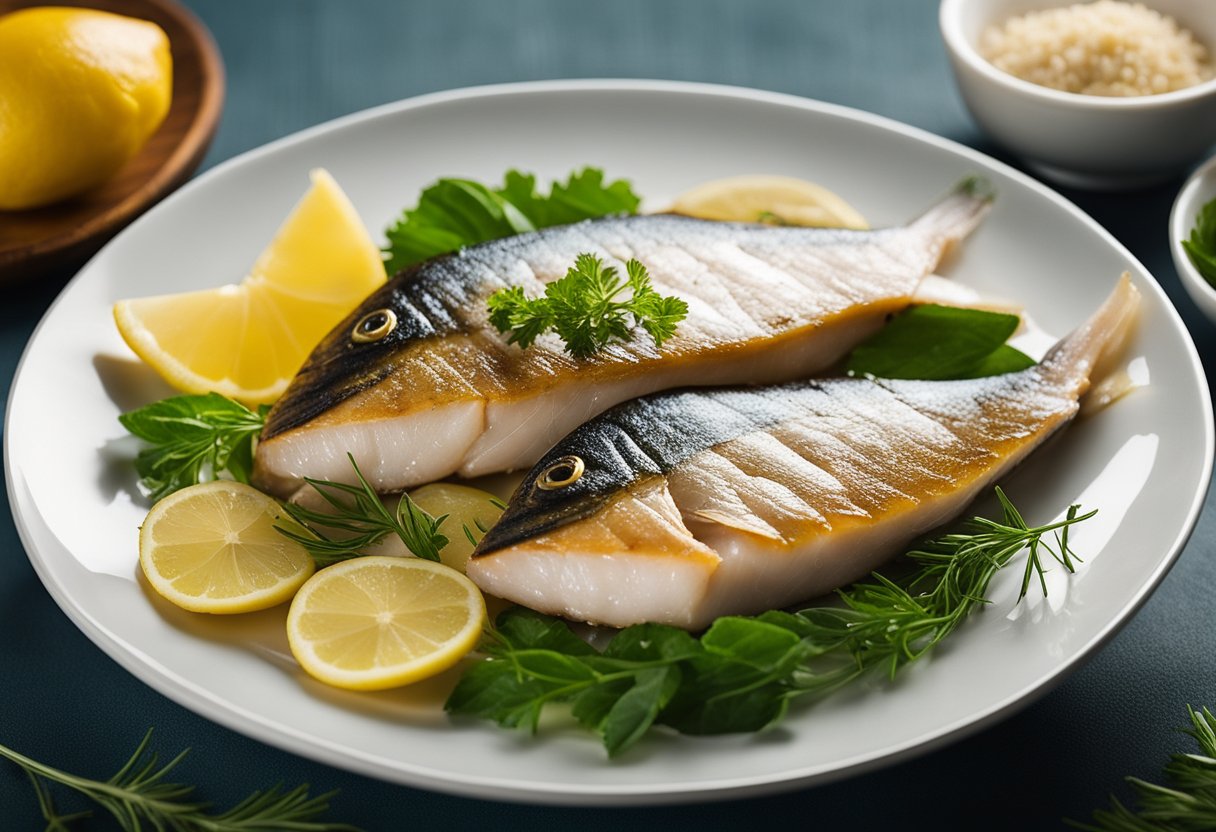
When it comes to seasoning and marinades for yellowtail, the options are almost endless. Yellowtail has a mild and slightly sweet flavor that pairs well with a variety of herbs, spices, and marinades.
One of my favorite ways to season yellowtail is by simply brushing it with olive oil and sprinkling it with salt and pepper. This allows the natural flavor of the fish to shine through while still adding a touch of seasoning.
For those who prefer a more pronounced flavor, yellowtail can be marinated in a variety of mixtures. Lemon and garlic are a classic pairing for fish, and a simple marinade of lemon juice, olive oil, minced garlic, and fresh herbs like rosemary or thyme can add a delicious flavor to yellowtail.
If you prefer a more citrusy flavor, yellowtail can also be marinated in a mixture of orange juice, lime juice, and honey. This sweet and tangy marinade is perfect for those who enjoy a more tropical taste.
Yellowtail can also be seasoned with a variety of dry rubs. A mixture of paprika, cumin, and chili powder can add a touch of heat to the fish, while a blend of dried herbs like oregano, basil, and thyme can add a Mediterranean flair.
When it comes to cooking yellowtail, it’s important to keep in mind that it is a delicate fish that can easily overcook. Whether you choose to grill, bake, or pan-sear your yellowtail, be sure to keep a close eye on it to prevent it from becoming dry and tough.
Overall, yellowtail is a versatile fish that can be seasoned and marinated in a variety of ways to suit your personal taste preferences.
Nutritional Value of Yellowtail
Yellowtail is a type of fish that is known for its delicious taste and nutritional value. It is rich in protein, omega-3 fatty acids, vitamins, and minerals, making it a healthy addition to any diet.
Protein
Yellowtail is a great source of protein, which is essential for building and repairing tissues in the body. A 3-ounce serving of yellowtail contains approximately 20 grams of protein, which is about 40% of the recommended daily intake for adults.
Omega-3 Fatty Acids
Yellowtail is also a good source of omega-3 fatty acids, which are important for heart health and brain function. A 3-ounce serving of yellowtail contains approximately 1.2 grams of omega-3 fatty acids.
Fat Content
While yellowtail is a good source of healthy fats, it is important to note that it is also relatively high in calories. A 3-ounce serving of yellowtail contains approximately 150 calories and 9 grams of fat.
Vitamins and Minerals
Yellowtail is also a good source of vitamins and minerals. It is particularly high in vitamin B12, which is important for nerve function and the production of red blood cells. A 3-ounce serving of yellowtail contains approximately 90% of the recommended daily intake for vitamin B12.
Additionally, yellowtail is a good source of selenium, which is important for immune function, and phosphorus, which is important for bone health.
Overall, yellowtail is a nutritious and delicious fish that is a great addition to any diet. It is a good source of protein, omega-3 fatty acids, vitamins, and minerals, making it a healthy choice for those who are looking to improve their overall health and wellbeing.
Comparison of Yellowtail with Other Fish
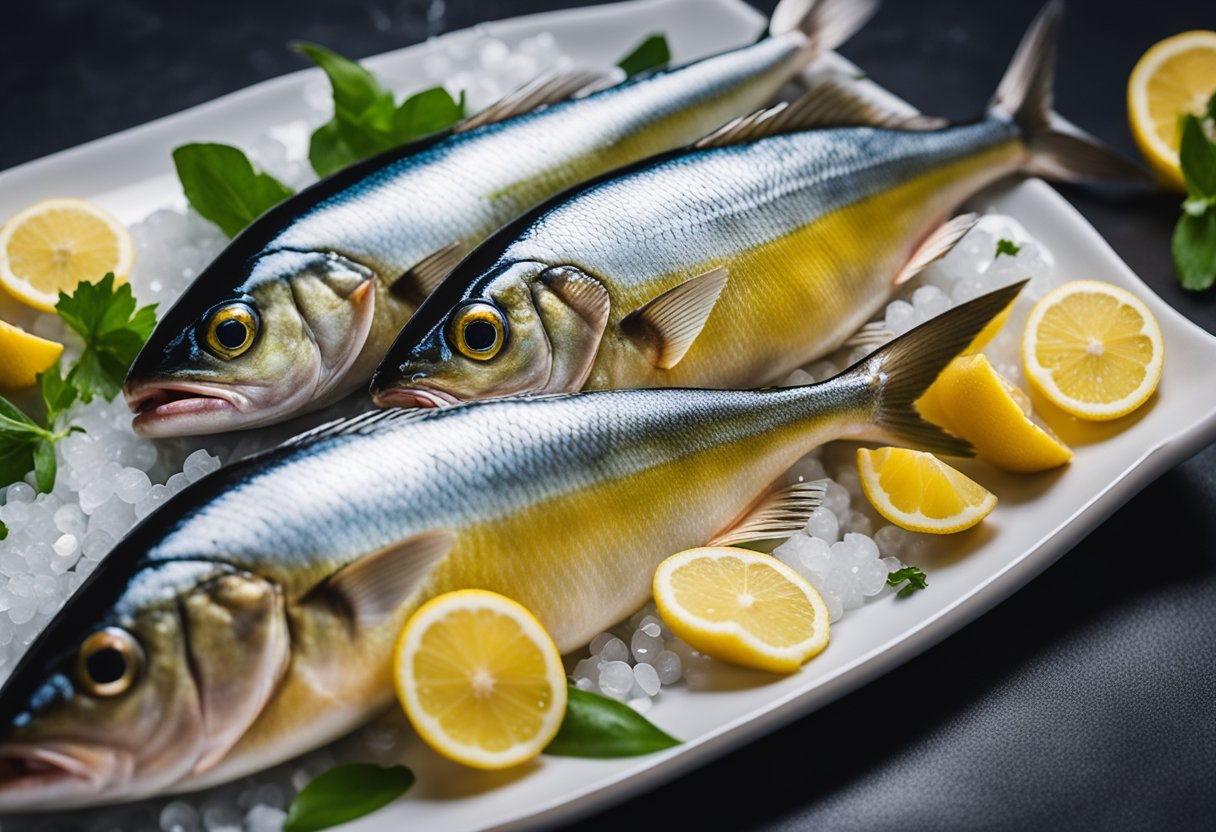
When it comes to seafood, there are many different types of fish to choose from. Yellowtail is a popular choice, but how does it compare to other fish in terms of taste and texture? Here’s a brief comparison:
Tuna
Tuna is a popular fish that’s often used in sushi and other dishes. It has a mild flavor and a firm, meaty texture. Yellowtail, on the other hand, has a more delicate flavor and a softer texture. Both fish are delicious, but they offer different taste experiences.
Amberjack
Amberjack is another fish that’s often compared to yellowtail. Both fish have a rich, buttery flavor and a tender texture. However, amberjack is often considered to be slightly firmer and more meaty than yellowtail.
Swordfish
Swordfish is a meaty fish with a mild flavor. It has a firm texture and is often grilled or broiled. Yellowtail, on the other hand, has a softer texture and a more delicate flavor. Both fish are delicious, but they offer different taste experiences.
Salmon
Salmon is a popular fish that’s often used in sushi and other dishes. It has a rich, buttery flavor and a tender texture. Yellowtail has a similar flavor, but it’s often considered to be slightly milder than salmon. Yellowtail also has a softer texture than salmon.
Steak
When it comes to fish, steak is a term used to describe a thick, meaty cut of fish. Yellowtail can be prepared in a steak-like manner, and it has a rich, buttery flavor and a tender texture. Other fish that can be prepared in a steak-like manner include swordfish, tuna, and salmon.
Yellowfin
Yellowfin tuna is another fish that’s often compared to yellowtail. Both fish have a rich, buttery flavor and a tender texture. However, yellowfin tuna is often considered to be slightly firmer and more meaty than yellowtail.
White Fish
White fish is a term used to describe a variety of fish that have a mild flavor and a tender texture. Examples of white fish include halibut, sea bass, and mutton snapper. Yellowtail has a more delicate flavor and a softer texture than most white fish.
Dogtooth Tuna
Dogtooth tuna is a type of tuna that’s often used in sushi and other dishes. It has a rich, meaty flavor and a firm texture. Yellowtail has a more delicate flavor and a softer texture than dogtooth tuna.
Opah
Opah is a type of fish that’s often compared to tuna. It has a rich, buttery flavor and a tender texture. Yellowtail has a similar flavor, but it’s often considered to be slightly milder than opah. Yellowtail also has a softer texture than opah.
In conclusion, yellowtail is a delicious fish that’s often compared to other popular seafood options. It has a delicate flavor and a tender texture that sets it apart from other fish. Whether you’re a fan of tuna, salmon, or other types of seafood, yellowtail is definitely worth a try.
Unique Aspects of Yellowtail
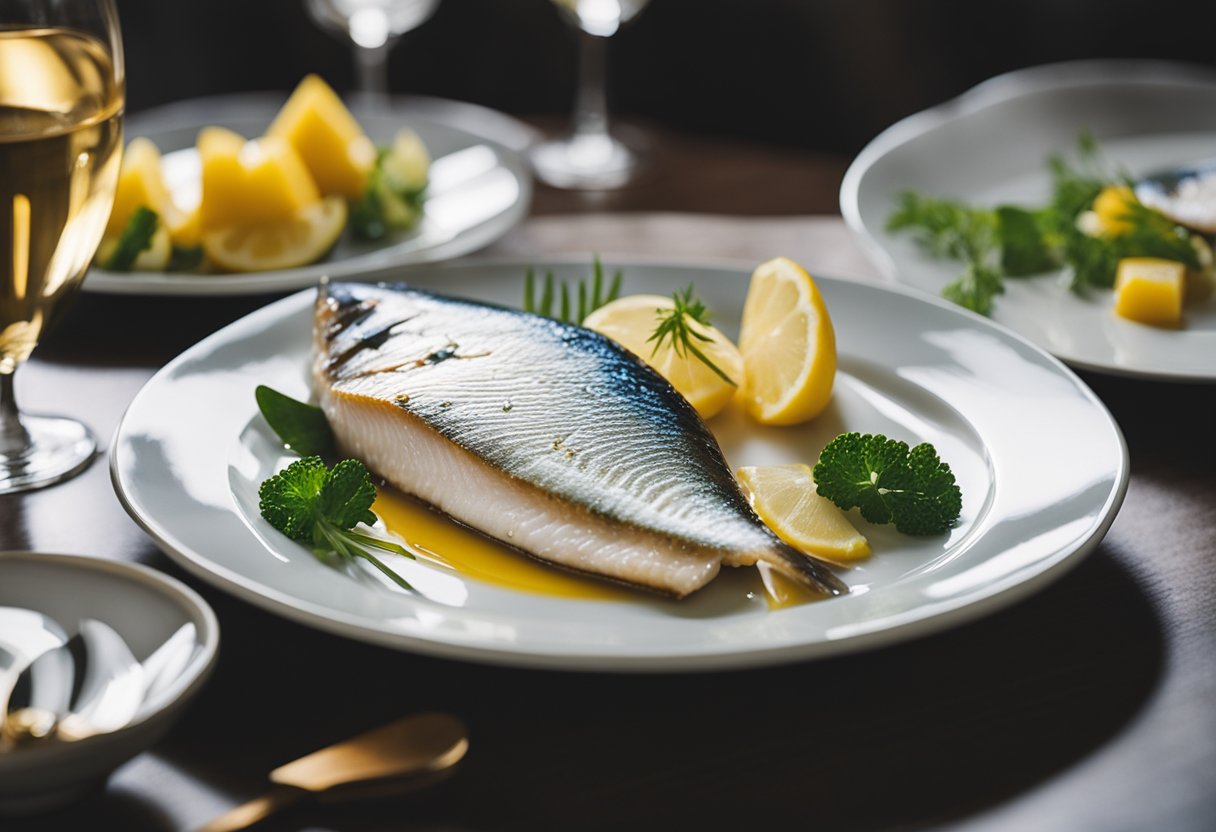
Yellowtail is a type of fish that is commonly found in the Pacific Ocean, and it is often served in sushi restaurants all over the world.
It is known for its succulent meat, which has a sweet and savory flavor profile. Here are some unique aspects of yellowtail that make it stand out from other seafood options:
- Tail: Yellowtail has a long, slender tail that is often used to make dishes like grilled yellowtail tail or yellowtail teriyaki. The tail is rich in flavor and has a firm, meaty texture that pairs well with a variety of seasonings and sauces.
- Meat: The meat of yellowtail is buttery and delicious, with a rich, oily texture that makes it ideal for grilling, searing, or baking. It is often served as a fillet, which can be cooked in a variety of ways to suit different tastes.
- Sweet Flavor: Yellowtail has a sweet flavor that is similar to other types of fish like tuna or salmon, but with a unique twist. The sweetness is balanced by a savory flavor that makes it a versatile ingredient in many different types of cuisine.
- Oily: Yellowtail is an oily fish, which means that it is high in healthy omega-3 fatty acids. This makes it a great choice for people who are looking for a nutritious and flavorful seafood option.
- Succulent: The meat of yellowtail is succulent and juicy, with a delicate texture that melts in your mouth. It is often compared to buri, a type of yellowtail that is popular in Japan.
- Roe: Yellowtail roe is a prized delicacy in many parts of the world. It is often served as a garnish or used to add flavor to dishes like sushi or sashimi.
- Australia: Yellowtail is a popular fish in Australia, where it is known as kingfish. It is often caught off the coast of New South Wales and is a favorite among local fishermen and seafood lovers alike.
Overall, yellowtail is a delicious and versatile seafood option that is perfect for anyone who loves fish. Whether you prefer it grilled, seared, or raw, there are plenty of ways to enjoy the unique flavor and texture of this amazing fish.
Preparation Tips for Yellowtail
When it comes to cooking yellowtail, there are several preparation tips that can help you make the most of this delicious fish. Whether you’re grilling, baking, or frying yellowtail, here are some tips to keep in mind:
- Seasoning: Yellowtail has a mild to moderate flavor, so it can benefit from some seasoning to enhance its taste. Try seasoning the fish with salt, pepper, and lemon juice for a fresh, acidic balance that complements its richness.
- Grilling: Grilling yellowtail can bring out its natural smoky flavor and add a crispy texture to the skin. Brush the fish with olive oil and season it with salt and pepper before cooking it on a hot grill for 5-7 minutes on each side.
- Baking: Preheat the oven to 375°F and place the yellowtail in a baking dish. Season it with your desired spices and bake it for 15-20 minutes, or until the flesh is opaque and flakes easily with a fork.
- Frying: Yellowtail can also be fried for a crispy and flavorful dish. Cut the fish into bite-sized pieces and coat them in seasoned flour or breadcrumbs. Heat some oil in a frying pan and cook the fish until it’s golden brown on both sides.
- Collar: The collar of the yellowtail, which is the part behind the gills and below the head, can be grilled or broiled for a delicious treat. Brush it with some soy sauce and mirin before cooking it for 5-7 minutes on each side.
- White flesh: Yellowtail has a firm, white flesh that can be used in a variety of recipes. It’s often used in sushi and sashimi, but it can also be grilled, baked, or fried for a tasty meal.
- Belly: The belly of the yellowtail is often considered a delicacy due to its rich, fatty flavor. It can be grilled or broiled for a delicious treat, or used in sushi and sashimi.
- Fresh fish: Yellowtail is best when it’s fresh, so make sure to look for fish that has bright, clear eyes and a firm texture. If you’re not sure how to tell if a fish is fresh, ask your fishmonger for help.
- Yellowfin tuna: Yellowtail is often confused with yellowfin tuna, but they’re two different types of fish. Yellowtail has a milder flavor and a softer texture than yellowfin tuna.
Overall, yellowtail is a versatile fish that can be prepared in many different ways. Whether you’re grilling, baking, or frying it, these preparation tips can help you make the most of this delicious fish.
Yellowtail for Seafood Lovers
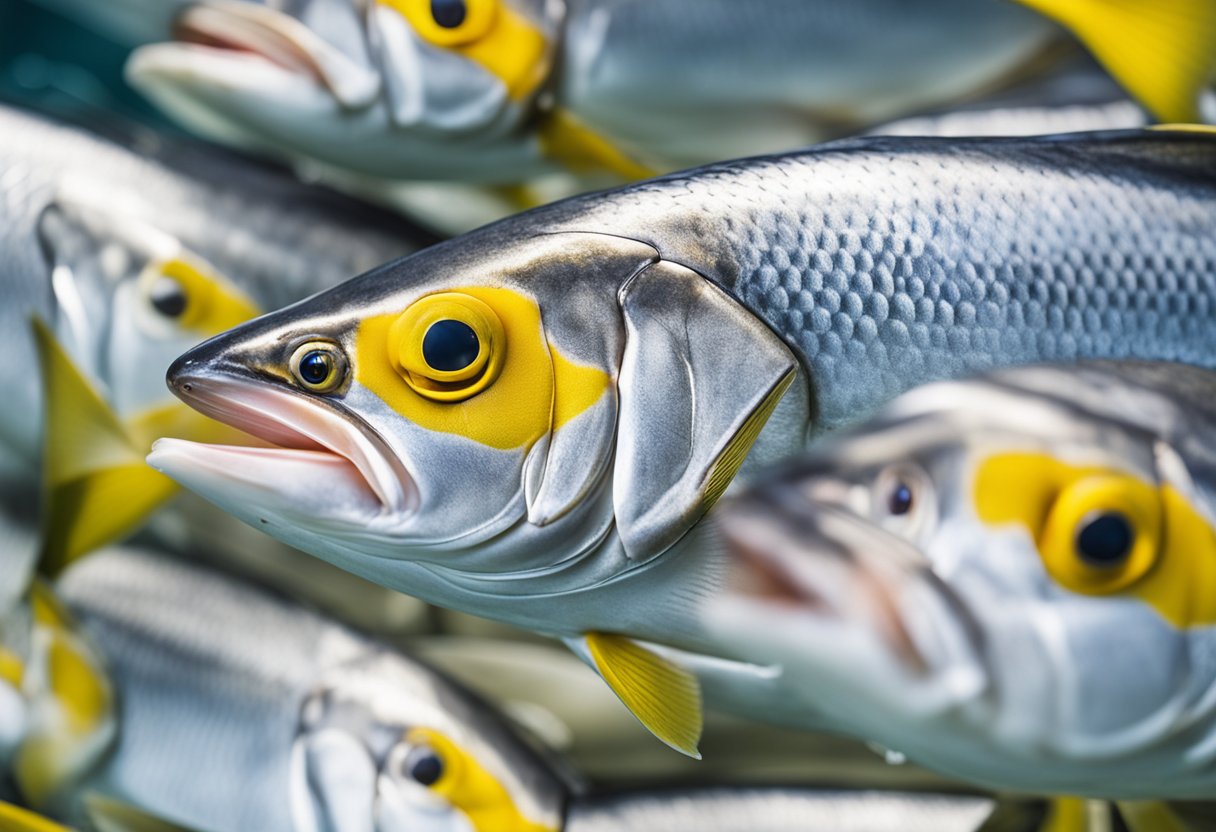
As a seafood lover, I have always been curious about the taste of yellowtail. Yellowtail, also known as Hamachi or Japanese Amberjack, is a type of fish that is commonly found in the Pacific and Atlantic oceans. It is often served in sushi restaurants all over the world.
Yellowtail has a rich, buttery texture and a mild, slightly sweet flavor that is often compared to tuna or sea bass. It is a fatty fish, which means it has a high oil content that contributes to its rich taste and texture.
One of the greatest things about yellowtail is that it can be eaten raw. Sashimi is a great way to enjoy yellowtail, as its buttery texture and mild flavor really shine when it is served raw.
If you prefer your fish cooked, yellowtail is also a great choice. Its high oil content makes it well-suited for most cooking methods except for frying. Grilling, broiling, and baking are all great options for preparing yellowtail.
In addition to its delicious taste, yellowtail is also known for its fighting spirit. It is a popular game fish that is sought after by many anglers. Its strong fighting ability makes it a challenging catch, and its delicious taste makes it a prized catch.
Overall, if you are a seafood lover, yellowtail is definitely worth trying. Its rich, buttery texture and mild, slightly sweet flavor make it a delicious and versatile fish that can be enjoyed in many different ways.
Frequently Asked Questions
What is the flavor profile of yellowtail sushi?
Yellowtail sushi has a rich, buttery flavor with a slightly sweet taste. It is often compared to the flavor of tuna or sea bass. The texture of yellowtail sushi is firm and meaty, making it a popular choice for sushi lovers.
How does yellowtail taste compared to tuna sushi?
Yellowtail has a milder flavor than tuna sushi. It has a buttery taste with a slightly sweet flavor, while tuna sushi has a more robust and meaty taste. The texture of yellowtail sushi is also different, with a firmer and meatier texture than tuna sushi.
What are some recipes to prepare yellowtail fish?
Yellowtail fish can be prepared in a variety of ways, including grilling, baking, and pan-searing. Some popular recipes include yellowtail ceviche, yellowtail sashimi, and yellowtail teriyaki. Yellowtail can also be used in sushi rolls, such as yellowtail and avocado rolls or spicy yellowtail rolls.
What is the taste difference between yellowtail snapper and red snapper?
Yellowtail snapper has a sweeter and milder flavor than red snapper. Red snapper has a slightly nutty taste with a firmer texture, while yellowtail snapper has a delicate and buttery flavor with a softer texture.
What is the texture of tobiko and how does it pair with yellowtail sushi?
Tobiko is a type of fish roe that has a crunchy texture and a slightly salty taste. It pairs well with yellowtail sushi because the crunchy texture of tobiko complements the meaty texture of yellowtail sushi, while the saltiness of tobiko enhances the buttery flavor of yellowtail.
Is yellowtail a recommended fish to try for sushi lovers?
Yes, yellowtail is a highly recommended fish for sushi lovers. It has a rich, buttery flavor with a slightly sweet taste and a firm, meaty texture. Yellowtail sushi is a popular choice in sushi restaurants all over the world, and it is a great fish to try if you want to expand your sushi palate.



